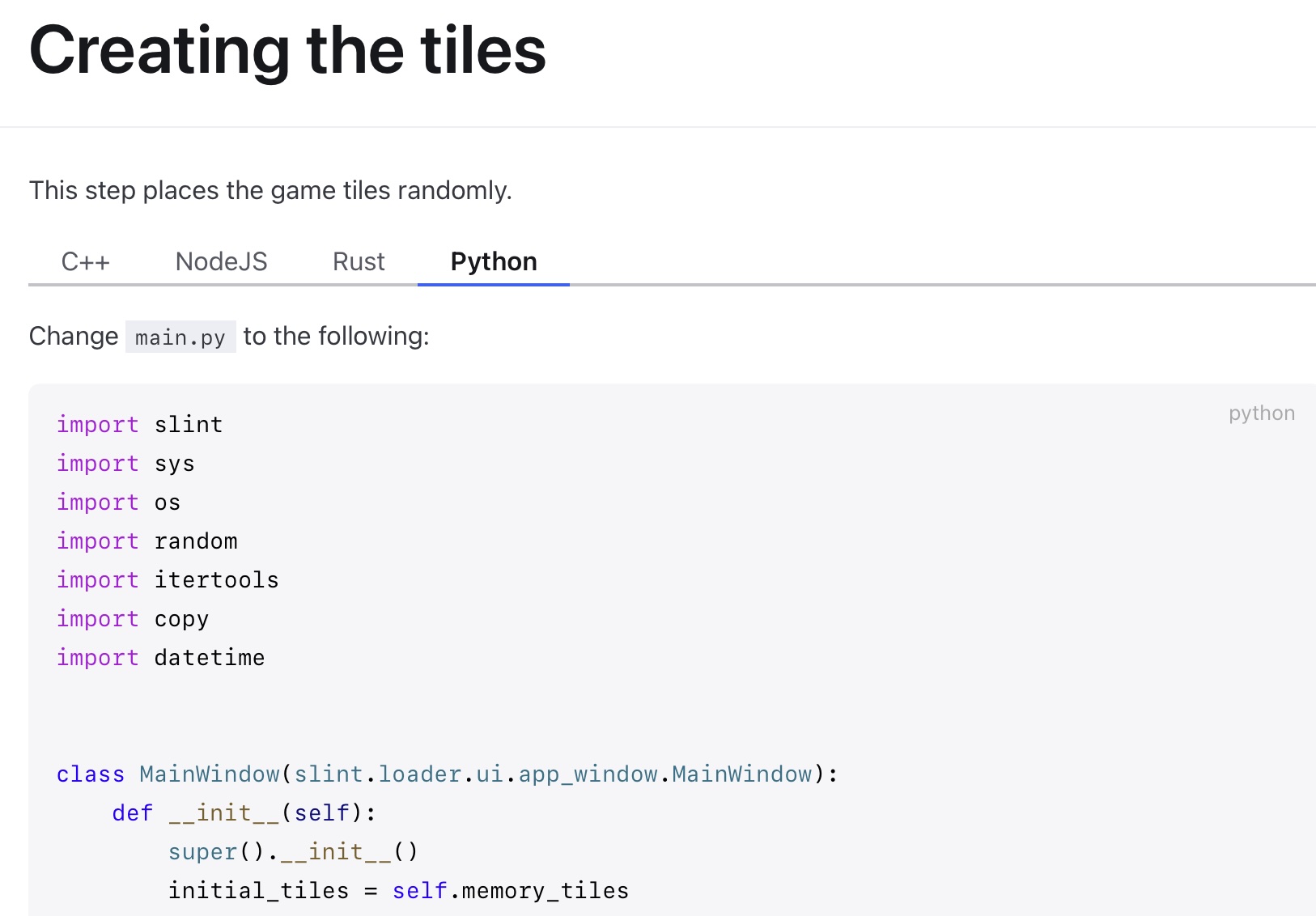April 23, 2025 by Slint Team
Slint 1.11 adds Color Pickers to Live-Preview and upgrades Python Bindings to Beta 
Slint is an open-source toolkit for building native user interfaces with Rust, C++, JavaScript, and Python. We're excited to announce the release of Slint 1.11.
It’s been over two years since the release of Slint 1.0, and less than two months since our last update. With version 1.11, we’re introducing beautiful visual color and gradient pickers in Live-Preview, making UI design more intuitive and interactive. We’re also graduating our Python bindings from alpha to beta, a major step toward production readiness. This release also includes a variety of smaller improvements and bug fixes to enhance overall stability and developer experience.
🎨 Visual Color and Gradient Pickers in Live-Preview
We've made a significant update to the live-preview tooling: The standard way to represent a color in Slint is with an RGB hex value such as #2479f4. A linear gradient is slightly more complex, for example: @linear-gradient(90deg, #ff0000 0%, #0000ff 66%, #ff00ff 83%, #ff0000 100%). Some code editors visualise hex colors and offer some kind of in-built color picker, but they are often suboptimal. Worse still, no code editors are able to handle gradients.
Editing colors and gradients visually can be faster and intuitive. That's why we've added visual pickers to the Live-Preview that can handle colors, as well as linear or radial gradients. Expose these properties as in-out and they will show up in the data tab for real-time editing.
The Live-Preview itself is built with Slint and shows that even the most demanding and complex of components can be created using the Slint language.
🐍 Python Bindings Now in Beta
After about a year of development, we’re excited to announce that the Slint Python API has graduated from alpha to beta. This milestone brings a more complete and developer-friendly experience for Python users, including:

- Mypy typings: Catch bugs in API usage early with typings for static APIs such as
ColororListModel. - Learning resources: Walk through the Slint tutorial with Python code. Additional sections—especially those covering the integration of UI and business logic—also include Python examples.
- Initial API reference: Browse the beta version of the Python API documentation online.
- Quick-start tooling: Download our project template or run the "Create New Project From Template" command in our Visual Studio Code extension.
We're working towards the first stable release, to include support for Python coroutines, and finalizing our strong typing model for Slint components and properties.
🛠️ Bug Fixes and Enhancements
This release also includes several bug fixes and new APIs:
- New String Functions: Convert floats to formatted strings with
to-fixed()andto-precision(). Change the case of a string withto-uppercase()andto-lowercase(). - Menus: Insert separators with
MenuSeparatorand disable menu items with the newenabledproperty. On Linux, the Slint-based menu bar now shows hover effects when a menu is open. StandardButton: Addedprimaryproperty.- Fixed
Color.hsv()to wrap the hue instead of clamping. - Accessibility: Numerical or password text input fields are now correctly reported to the accessibility sub-system.
- Fixed panic when opening popups.
- Fixed rendering of non-square radial gradients.
- Skia: Fixed a fatal Vulkan validation error.
- Skia: Changed default on Windows to use the software renderer, instead of Direct3D.
- C++: Fixed
Math.modwith negative numbers.
🚀 Upgrading
If you're new to Slint, check out our Get Started section. If you're upgrading from an earlier release, follow the instructions on our GitHub release page to upgrade.
For a complete list of changes, check out the full ChangeLog.
🌟 Thanks
Big thanks to everyone who contributed code, fixes, or feedback. 👏 You make Slint better with every release: @fieran100 @ubruhin @Montel @task-jp @npwoods @redstratea @georgik @scristall-bennu @crai0 @SuchAFuriousDeath @fivlao @DataTriny .
Slint is a Rust-based toolkit for creating reactive and fluent user interfaces across a range of targets, from embedded devices with limited resources to powerful mobile devices and desktop machines. Supporting Android, Windows, Mac, Linux, and bare-metal systems, Slint features an easy-to-learn domain-specific language (DSL) that compiles into native code, optimizing for the target device's capabilities. It facilitates collaboration between designers and developers on shared projects and supports business logic development in Rust, C++, JavaScript, or Python.